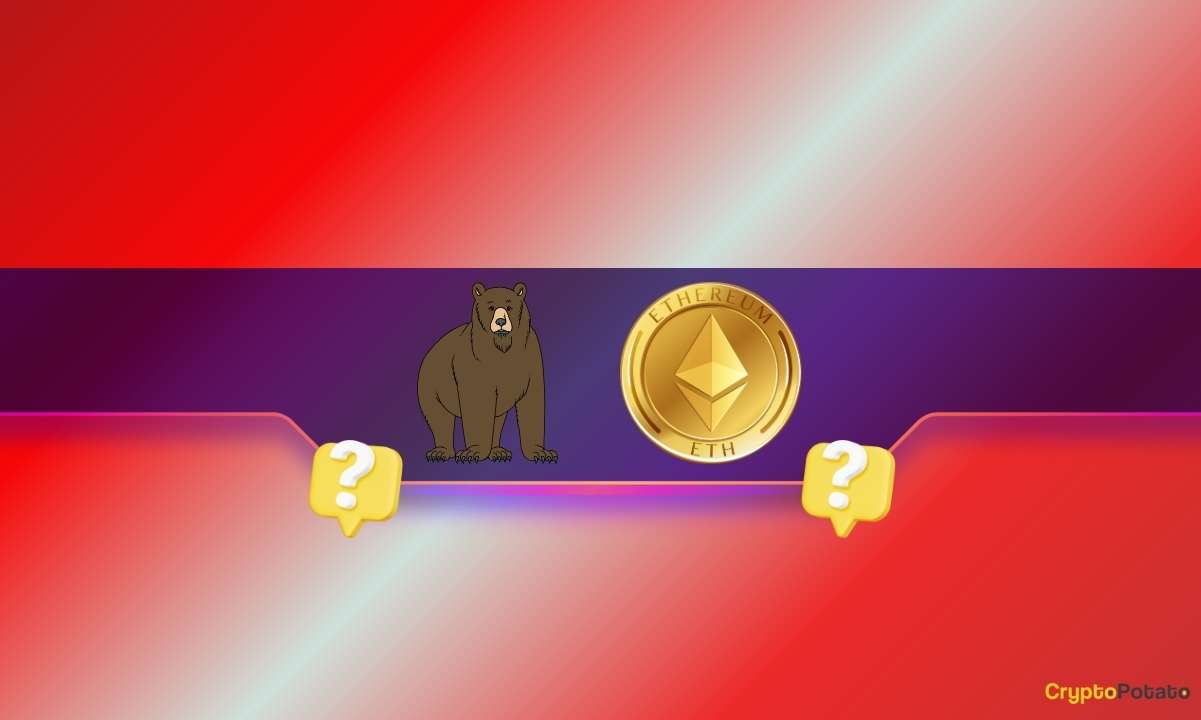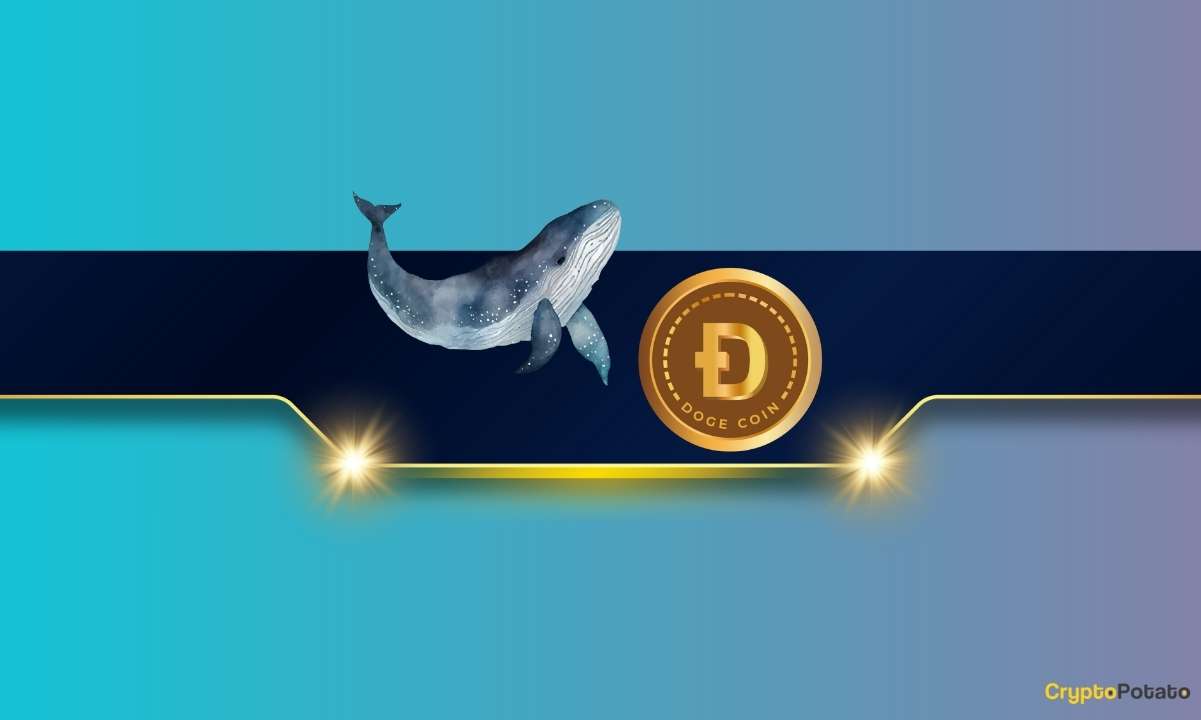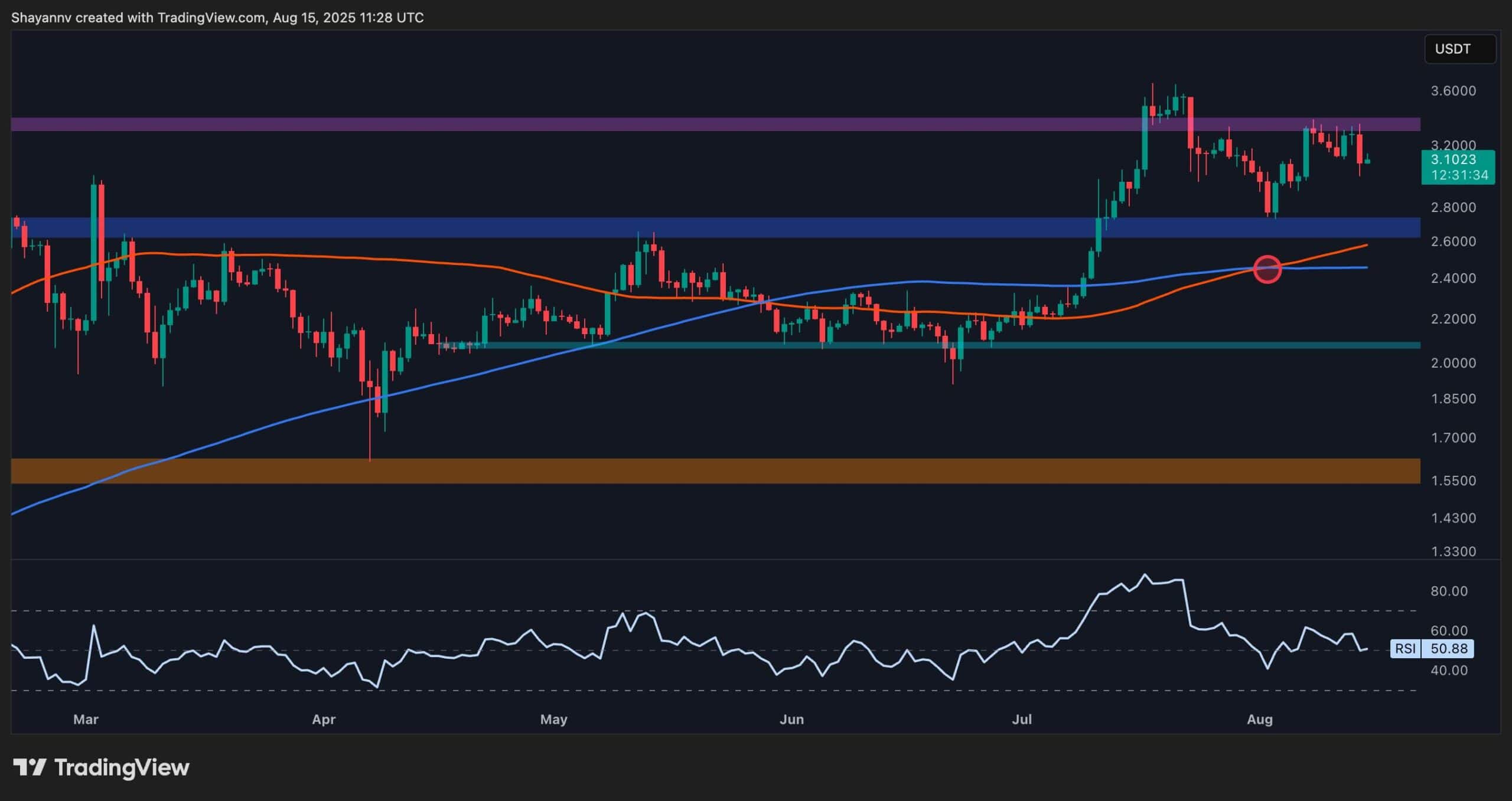Cryptocurrency
Violent Trend Reversal in Solana’s April Prices Has Altcoin Degens Drooling

The fastest commercial-grade smart contract blockchain in a speed test by CoinGecko last May, Solana’s SOL is the #5 largest non-stablecoin cryptocurrency by total market capitalization.
Your favorite VC-funded tokens are down bad.
Meanwhile, Solana degen season is printing life-changing bags.
Stop crying for macro and get on your grind! pic.twitter.com/CCU6py3tX7
— Xia (@xiaweb3) April 17, 2025
SOL’s price whipped up on a 38% rally over 10 days from Apr. 7 to Apr. 10. Meanwhile, Bitcoin’s price decoupled from a bad week in stocks and added 11%. By comparison, Ethereum prices jumped by just 6%.
The following five items are pertinent to Solana’s fast capital gains in mid-April.
1. 2025’s Bullish SOL Falling Wedge Pattern
$SOL || Towards $250 ✅
Remember we bought Solana at ~$100#Solana pic.twitter.com/qgelpcM1JR
— Christiaan (@ChristiaanDefi) April 17, 2025
In mid-April, the chart shows classic converging trend lines, with the big upswing beginning the second week of the month really pulling the Solana price outlook’s borderlines into that bullish formation.
The falling wedge pattern is a classic bullish signal. They often precede a bull run beginning near the time when the trend lines converge on the chart. Solana’s 2025 falling wedge shows up on the 1Y view starting in late January.
The trend lines of support tracing low price outliers came in higher as the weeks go on, while the trend lines of resistance tracing high price outliers came in lower. They converge right around the time of Solana’s mid-April price rally.
Furthermore, Solana prices also threw up a cup and handle signal on the 1M window, concurrent with the bullish flip out of the falling wedge trend. It also exhibits the classic declining daily trade volume during the handle formation.
The 10-day little teapot formation began on Wednesday, Apr. 2 and ended Saturday, Apr. 12, followed by the textbook downward drifting side channel for a 4-day handle until Wednesday, Apr. 16, followed by a bullish test to rally mid-week.
The April chart for SOL tokens also features a neat 4-day mini-cup and handle within the handle of the 10-day teapot. So the market technical indicators are beautifully bullish this month.
2. Solana Tokens Cost Basis Support at $130
#Solana’s URPD shows a major shift in cost basis over the past two days, forming the largest supply cluster (>5%) at $129.79 with over 32M $SOL. This zone could act as a support during future drawdowns, reflecting high investor engagement at this price level. pic.twitter.com/mrunKSjKZL
— glassnode (@glassnode) April 15, 2025
In addition to the bullish chart patterns for Solana in April, there are other market technical signals with effects on Solana’s price in future markets.
Blockchain insights firm Glassnode noted on Apr. 15 that the median cost basis, or the price at the most recent trade that shows up for the most SOL tokens, was $129.79.
That median cost basis near the average trading price mid-April could work as an investor bias and market price ratchet locking in support for more growth at current price levels, the blockchain intelligence firm noted.
“This zone could act as a support during future drawdowns, reflecting high investor engagement at this price level,” Glassnode wrote.
3. Real Estate Giant Proxy Staking $1/2 Billion of SOL
1000-year-old financial systems don’t change overnight — except when they do.
The institutions are here, and they’re building on Solana. pic.twitter.com/7miCRXNpUF
— Solana (@solana) April 17, 2025
Meanwhile, as traders pull their stop-go traffic routine on the market price chart, Janover, the Boca Raton, Florida real estate commercial financing giant, is locking in new long-term support for Solana prices.
In April, Janover hired former Kraken C-execs to build a corporate stockpile of Solana, following the financial strategy set by Michael Saylor at MicroStrategy with corporate Bitcoin financing.
The Florida company bought an initial tranche of some $20 million worth of SOL tokens. Meanwhile, it’s partnering with Kraken, which is delegating about half a billion dollars worth of Solana tokens to Janover to proxy manage staking them and operating node validators for Solana yield.
In the past 7 days, the top 5 blockchains generated $29.15M in fees:
1️⃣ @trondao – $12.49M
2️⃣ @solana – $7.46M
3️⃣ @ethereum – $4.68M
4️⃣ @BNBCHAIN – $3.7M
5️⃣ @base – $821K pic.twitter.com/My9VIKSV3w— Nansen (@nansen_ai) April 18, 2025
While Ethereum waits for the financial establishment in Washington to approve ETF staking for regulated investors, Solana developers are implementing a strategy that worked for Bitcoin to deliver regulated SOL staking.
Both crypto markets and stock markets enthusiastically rewarded Strategy/Bitcoin in both currency exchange prices and the prices of regulated tickets for stock traders to capitalize on BTC.
MSTR stock started 2023 at $16 and traded this April for $316. Meanwhile, Janover stock surged an astounding 1,500% in under 30 days from $5 in March to $75 in April, according to Google Finance.
Did you know $MANEKI 1 year anniversary is April 22nd, just 6 days away?
Everyone thought the luckiest cat on #Solana was dead… but it just clawed its way from $10M to $30M market cap in under a week.
Is $MANEKI about to go full nine lives mode?#Solana #Crypto $MANEKI #btc pic.twitter.com/p0FXnlCOjr
— Eagle King (@Eagleblacking) April 17, 2025
4. NFT App OpenSea Rolls Out Solana Trading
Solana token trading is now live on OS2 for some closed beta users & will be rolling out to more in the coming weeks.
This is a big milestone in our multi-chain journey. Solana has some of the most passionate users and builders in web3.
Coins first, NFTs coming later. Most… pic.twitter.com/Bj1Tka98Le
— OpenSea (@opensea) April 14, 2025
Adding to Solana’s integrations in April, premier NFT exchange OpenSea piloted SOL token swaps.
“Solana token trading is now live on OS2 for some closed beta users & will be rolling out to more in the coming weeks,” OpenSea wrote.
Meanwhile, 5 of the Top 7 blue chip meme coin gainers on the 7D window, according to CoinMarketCap data mid-April, are minted by Solana: MANEKI, BROCC, AIDOGE, DOGEGOVCOM, and POPCAT. MANEKI, Japanese for lucky cat, posted a 255% weekly green candle.
what in the cabal is happening here?
these are all 15 min candles$maneki pic.twitter.com/B36goLZskB
— lyxe (@cryptolyxe) April 17, 2025
5. Four Solana ETFs Launch in Canada
Canada is readying spot Solana ETFs to launch this week after regulator gave green light to multiple issuers incl Purpose, Evolve, CI and 3iQ. ETFs will include staking via TD pic.twitter.com/FSw149Xkm4
— Eric Balchunas (@EricBalchunas) April 14, 2025
Finally, for this brief summary, four Solana ETFs launched on the Toronto Stock Exchange in mid-April following a green light from the Ontario Securities Commission (OSC).
Meanwhile, Solana led most other altcoins in April by the number of live applications at the SEC for a custodial exchange-traded cryptocurrency fund in the US.
Ripple was the leader at 10, but Solana was second with 5, with DOGE and LTC next at 3 each, according to public records data compiled by Paris-based blockchain intel firm Kaiko.
Institutional demand for Ripple is very strong in 2025. Here are 5 Ripple meta narratives backing UK bank Standard Chartered’s recent forecast of 525% upside from XRP’s April price levels.
Binance Free $600 (CryptoPotato Exclusive): Use this link to register a new account and receive $600 exclusive welcome offer on Binance (full details).
LIMITED OFFER for CryptoPotato readers at Bybit: Use this link to register and open a $500 FREE position on any coin!
Cryptocurrency
Ethereum Foundation, Whales, and Hackers: What’s Driving the ETH Sell-Off?

TL;DR
- Whales, hackers, and the Ethereum Foundation wallets moved over $500M in ETH through large sales and withdrawals.
- Ethereum transfers rose to 4.6M ETH, nearing the monthly high of 5.2M recorded in July.
- Staking inflows hit 247,900 ETH, the highest in a month, locking more supply from trading.
Large Withdrawals and Whale Activity
Ethereum (ETH) has seen heavy movement from major wallets over the past few days. On-chain data from Lookonchain shows a newly created wallet pulled 17,591 ETH, worth $81.62 million, from Kraken in just two hours.
Over three days, two new wallets withdrew a combined 71,025 ETH, valued at $330 million, from the exchange.
One of these wallets, address 0x2A92, has withdrawn 53,434 ETH, worth $242.34 million, in two days. This includes a recent purchase of 30,069 ETH, valued at $138.46 million, during a market drop.
Major ETH Holders Offload Millions Amid Price Rally
In contrast, several separate entities have been disposing of some ETH holdings. A wallet tied to a hacker address 0x17E0 sold 4,958 ETH for $22.13 million at $4,463, securing a profit of $9.75 million. Earlier this year, the same address sold 12,282 ETH at $1,932 and later bought back part of the amount at higher prices.
A different whale sold 20,600 ETH for $96.55 million over the past two days, generating a profit of more than $26 million after holding the position for nine months.
Meanwhile, an Ethereum Foundation-linked wallet, 0xF39d, sold 6,194 ETH worth $28.36 million in the last three days at an average price of $4,578.
Recent sales from the same wallet included an additional 1,100 ETH and 1,695 ETH for over $12.7 million combined.
The #EthereumFoundation-linked wallet(0xF39d) sold another 1,300 $ETH($5.87M) at $4,518 ~11 hours ago.
Over the past 3 days, this wallet has sold a total of 6,194 $ETH($28.36M) at an average price of $4,578.https://t.co/4hfCWymHVG pic.twitter.com/ErUyEY8SJy
— Lookonchain (@lookonchain) August 15, 2025
Network Activity on the Rise
CryptoQuant data shows Ethereum’s total tokens transferred have been climbing since August 9. After ranging between 1 million and 3 million ETH through late July and early August, transfers have risen to 4.6 million ETH, approaching the monthly high of 5.2 million recorded in mid-July. This increase has occurred alongside a price rally from about $3,400 to $4,600.
Interestingly, staking inflows generally stayed between 20,000 and 80,000 ETH per day over the past month. On August 14, inflows jumped to 247,900 ETH, the highest in the period.
At the time, ETH was trading near $4,600. Large staking deposits reduce the amount of ETH available for immediate trading, as staked coins are locked for a set period.
In the meantime, ETH trades at $4,647 with a 24-hour volume of $68.25 billion, down 2% on the day but up 19% over the week.
Binance Free $600 (CryptoPotato Exclusive): Use this link to register a new account and receive $600 exclusive welcome offer on Binance (full details).
LIMITED OFFER for CryptoPotato readers at Bybit: Use this link to register and open a $500 FREE position on any coin!
Cryptocurrency
Massive DOGE Whale Activity Hints at $1 Breakout

TL;DR
- Whales bought two billion DOGE this week, lifting their combined holdings to 27.6 billion coins.
- A single 900M DOGE transfer worth $208M to Binance drew attention to large exchange movements.
- DOGE broke key resistance, with momentum building for a possible push toward the $1 price mark.
Price and Market Moves
Dogecoin (DOGE) traded at $0.23 at press time, slipping 4% over the past day but still showing a 2% gain for the week. Daily turnover came in at about $6.18 billion.
Meanwhile, the broader crypto market saw over $1 billion in liquidations. Hotter-than-expected US Producer Price Index data pushed traders to scale back expectations of a near-term Federal Reserve rate cut. DOGE had roughly 290,500 coins liquidated during the sell-off.
On the two-week chart, analyst Trader Tardigrade notes that DOGE has cleared a downward-sloping resistance line after completing what appears to be a “wave V” in an Elliott Wave sequence. Similar setups in the past, where prolonged declines stayed within falling channels before breaking higher, have been followed by sharp rallies.
$Doge/2-week#Dogecoin is gaining strong momentum to surge above $1 pic.twitter.com/TuSEKr19nv
— Trader Tardigrade (@TATrader_Alan) August 15, 2025
Momentum gauges are also turning up. The Stochastic RSI, which had dropped into oversold territory, is now heading higher. Previous reversals from this zone have coincided with sustained upward moves. The current formation points to a possible run that could carry DOGE past the $1 mark.
Heavy Whale Buying and Large Transfers
As reported by CryptoPotato, blockchain data shows large investors have added two billion DOGE in the past week, spending just under $500 million. That brings their holdings to about 27.6 billion coins, or 18% of the supply. The buying streak has prompted speculation within the community.
Recently, Whale Alert flagged a 900 million DOGE transfer worth about $208 million into Binance. The tracking indicates that it originated from a wallet connected to the exchange, likely as an internal activity. The address involved holds 2.88 billion DOGE, one of the largest balances on the network.
Ali Martinez also reports that transactions above $1 million reached a one-month high, with activity building since early August and peaking as DOGE traded at $0.25.
Whales are back! Dogecoin $DOGE activity at a 1-month high. pic.twitter.com/C83Pv68mCt
— Ali (@ali_charts) August 14, 2025
Sentiment Building
Analyst Gordon described the current setup as “a nice bit of consolidation” before a potential breakout, adding,
“This will be one of the first coins normies FLOCK to & the pump will be MASSIVE.”
With whale accumulation rising, high-value transfers increasing, and a bullish technical pattern in play, DOGE is positioned for a potential push toward $1 if momentum holds.
Binance Free $600 (CryptoPotato Exclusive): Use this link to register a new account and receive $600 exclusive welcome offer on Binance (full details).
LIMITED OFFER for CryptoPotato readers at Bybit: Use this link to register and open a $500 FREE position on any coin!
Cryptocurrency
Ripple Price Analysis: XRP at Risk as Key Support Levels Could Trigger Sharp Drop

XRP has recently entered a consolidation phase after a strong rally earlier this summer, with the price action now hovering around key resistance levels on both its USDT and BTC pairs. Yet, while momentum has slowed, the charts still indicate a generally bullish structure, with multiple key support levels remaining firmly in place.
Technical Analysis
By ShayanMarkets
The USDT Pair
On the XRP/USDT daily chart, the price is currently trading near the $3.10 mark, facing a strong resistance zone around $3.40. This follows a breakout above the $2.70 range in July, which has now flipped into a support area.
Both the 100-day and 200-day moving averages are also trending upward and recently formed a bullish crossover around $2.45, reinforcing the medium-term bullish sentiment. If the $3.40 resistance breaks, a push toward the critical $4.00 range becomes likely.
However, the RSI hovering near the neutral 50 level suggests a lack of strong momentum for now, meaning a short-term pullback into the $2.80 support zone is still possible.
This zone will be key for maintaining the bullish structure. Losing it could open the door for a deeper correction toward the 200-day moving average located around the $2.40 mark. Yet, as long as the price stays above the moving averages, the broader trend remains bullish.
The BTC Pair
Looking at the XRP/BTC chart, the pair has recently pulled back after hitting the 3,000 SAT resistance, with the price currently around 2,600 SAT.
This follows a clean breakout above the long-term descending channel and a successful retest of its upper boundary, which coincided with the 200-day moving average and the 2,400 SAT support zone. This confluence remains a key bullish technical factor, as holding above it could attract renewed buying pressure.
That said, RSI levels around 48 show that momentum has cooled after the sharp July rally, meaning XRP may continue ranging between 2,400 SAT and 3,000 SAT in the near term. A decisive close above 3,000 SAT would likely open the path to the 3,400 SAT zone, while losing 2,400 SAT could shift the bias back toward 2,000 SAT support. For now, the structure still favors the bulls as long as higher lows remain intact.
Binance Free $600 (CryptoPotato Exclusive): Use this link to register a new account and receive $600 exclusive welcome offer on Binance (full details).
LIMITED OFFER for CryptoPotato readers at Bybit: Use this link to register and open a $500 FREE position on any coin!
Disclaimer: Information found on CryptoPotato is those of writers quoted. It does not represent the opinions of CryptoPotato on whether to buy, sell, or hold any investments. You are advised to conduct your own research before making any investment decisions. Use provided information at your own risk. See Disclaimer for more information.
Cryptocurrency charts by TradingView.

 Forex3 years ago
Forex3 years agoForex Today: the dollar is gaining strength amid gloomy sentiment at the start of the Fed’s week

 Forex3 years ago
Forex3 years agoUnbiased review of Pocket Option broker

 Forex3 years ago
Forex3 years agoDollar to pound sterling exchange rate today: Pound plummeted to its lowest since 1985

 Forex3 years ago
Forex3 years agoHow is the Australian dollar doing today?

 Cryptocurrency3 years ago
Cryptocurrency3 years agoWhat happened in the crypto market – current events today

 World3 years ago
World3 years agoWhy are modern video games an art form?

 Commodities3 years ago
Commodities3 years agoCopper continues to fall in price on expectations of lower demand in China

 Economy3 years ago
Economy3 years agoCrude oil tankers double in price due to EU anti-Russian sanctions





















